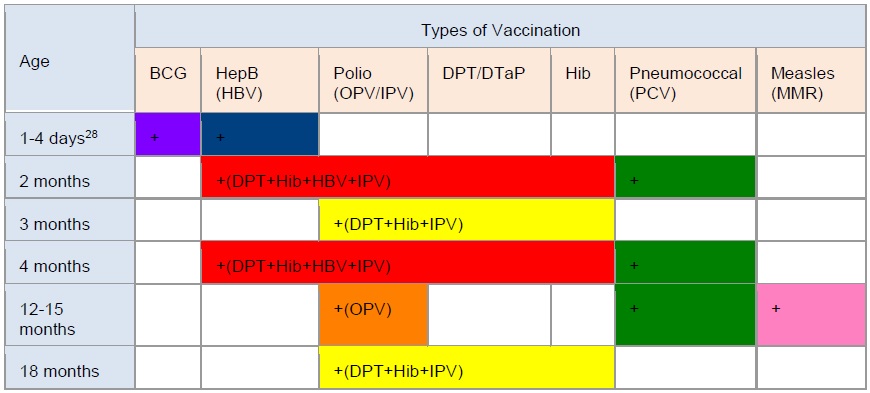Immunization plays a key role in the attainment of the third goal of the Sustainable Development Goals (SDG) aiming at end preventable deaths of newborns and children under 5 years of age by 2030.
In Kazakhstan, 8 out of 10 children receive all the recommended vaccinations by two years of age.
Immunization Schedule in the Republic of Kazakhstan, approved in 2013, provides all the following vaccinations:


In accordance with the national immunization schedule, every child should receive appropriate doses of vaccines in the recommended age-appropriate period. Exceptions may include a medical exemption from immunization due to illness of the child, as well as the parents’ refusal for vaccinations for valid reasons.
The proportion of vaccinated children reduced with each subsequent dose for each type of vaccines.

Generally, the reduction in the percentage of vaccinated children with each subsequent dose for all types of vaccines is greater for urban areas: for example, the proportion of vaccinated children aged 12-23 months with polio 2nd and 3rd doses in urban areas was 91.8 and 88.1 percent against, respectively, 96.8 and 94.2 percent of children living in rural areas. This tendency persists for almost every subsequent dose for all vaccinations. In addition, it is noted that children living in households in the richest wealth index quintile are less likely to be vaccinated than those living in households in the poorest index quintile.
Timely mother’s seeking for medical help, as well as having certain knowledge about danger signs and manifestations of various diseases, including awareness of the danger signs of pneumonia is an important step in providing adequate medical care to a sick child.
Overall, 36.7 percent of women know at least one of the two danger signs of pneumonia: fast breathing and/or difficult breathing. 27.6 percent of mothers recognize difficult breathing, and 15.5 percent of mothers recognize fast breathing as a symptom that would cause them to take their child immediately to a health facility.
Use of solid fuels increases the risks of incurring acute respiratory illness, pneumonia, chronic obstructive lung disease, cancer, and possibly tuberculosis, asthma, or cataracts, and may contribute to low birth weight of babies born to pregnant women exposed to smoke. The primary indicator for monitoring use of solid fuels is the proportion of the population using solid fuels as the primary source of energy for cooking.
In Kazakhstan, the use of solid fuels for cooking is almost at a minimum (1.5 percent). In the country, – coal or lignite is used by only 0.6 percent of the household population, wood – by 0.5 percent, animal dung – by 0.3 percent of the population.
Solid fuels are used almost exclusively by the rural population (3.0 percent), by households where the household head has no education or only primary education (5.9 percent), as well as the population of the poorest quintile (5.6 percent).